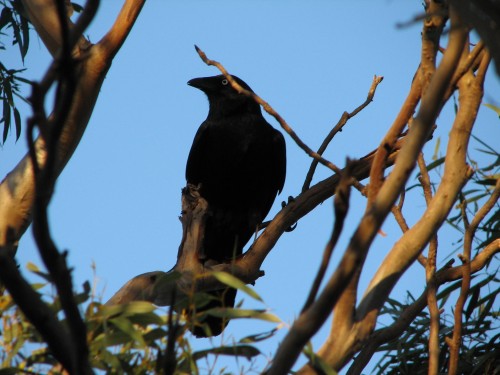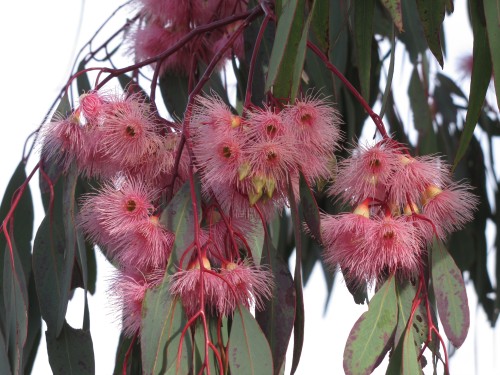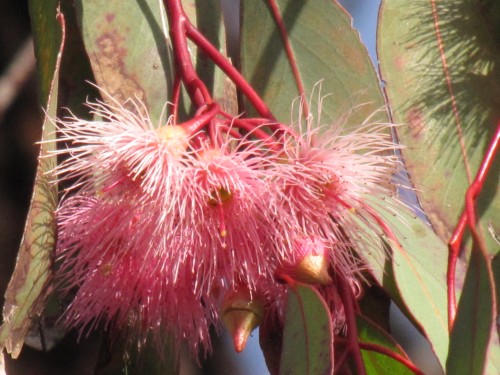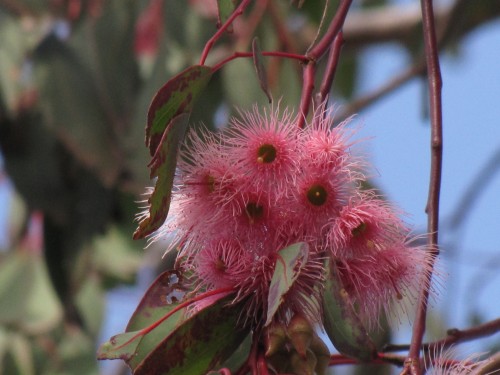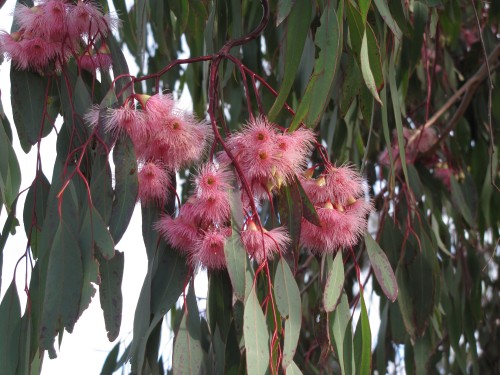Crows using tools
I have written before about how clever crows and ravens can be. This is a well established fact and people around the world have witnessed how intelligent the corvid family can be. In fact, if you do a search for videos of these birds using tools you will find many hundreds of them; I have provided a link below.
Earlier this week I witnessed first hand one of the Little Ravens in our garden actually using a tool to assist in finding food. It had picked up what looked like a flat rock and was progressively using it to prise bark off the trunk of a mallee tree near the house. Once the bark was lifted it dropped the stone and used its beak to grab whatever was hiding beneath the bark.
Spiders, beetles and a whole range of small creatures routinely live under the bark of the local trees. Several times the bird flew down to the ground to retrieve the stone in order to use it again for the same purpose. After about three or four little snacks it flew off, stone in its beak to another tree, this time out of sight.
Of course, I didn’t have my camera handy at the time. [Sigh]
Further reading:
- Clever crows – articles from my archives
- Corvids – links to more articles about crows and ravens
- Videos of crows using tools
- Little Ravens feeding their young
- A very clever crow
Red Wattlebirds and Eucalypts
Red Wattlebirds are one of the largest species of honeyeater in Australia. They are also one of the more common species of honeyeater over their range which is southern Australia.
The Red Wattlebird is a resident breeding species in our garden and on our five acre block of mallee scrub here in Murray Bridge, South Australia. We see them every day and we hear them calling throughout the day. During the warmer days they are frequent visitors to our bird baths, bullying most other species away from the water.
Over recent days we have been observing several wattlebirds feeding on the flowers of the Eucalyptus sideroxylon rosea tree in our drive-way. The common name of the tree is Red Iron-bark. I tried to get a photo of one of them feeding on the flowers but they always flew away before I could sneak up within camera range.
So – instead of getting frustrated by my lack of photos of the feeding birds, I have decided to show some photos of the flowers of the trees for your enjoyment.
Further reading:
Last bird for 2012
Happy New Year to all my readers.
Didn’t get to go out to do any birding yesterday. I was too busy preparing for our New Year’s Eve celebrations. Not that we hold wild, unbridled parties – quite the opposite. We invited six close friends to join us for a barbecue and an evening of unbridled anecdotes, jokes, laughter, serious observations on life and plenty of food. It was low key, relaxed and relatively quiet.
Just before midnight we heard the unmistakable call of “our” Australian Owlet-nightjar in the trees in our garden. It was a wonderful ending to a low-key year of birding. The Owlet-nightjar has been a resident species in our garden for several years now. We don’t always hear it calling, especially when the television is on. Another highlight yesterday was the return of the two Superb Fairy-wrens to our garden; they’d been absent for a few weeks.
I didn’t get a photo of the Owlet-nightjar but I did manage one of this normally nocturnal species a few years ago. You can click here to see a photo.
Related articles:
A few birds in Peterborough, South Australia
This post is long overdue. I’ve been busy.
Over the recent Easter long weekend we went to stay with our daughter in Clare in the mid-north of South Australia. On the Sunday we travelled further north to the town of Peterborough. This was where my wife grew up and in the intervening years we’ve visited many times, usually to visit family still living there.
On this occasion we also visited family and we went to see a number of exhibitions which made up a part of their annual arts festival. It left very little time for birding.
We did spend a few minutes driving through Victoria Park, an artificial lake (shown above) being the main feature of this picnic area. Due to time restraints I didn’t even have time to get out of the car, taking several shots through the window.
The photo above is unexciting as far as birds is concerned: a few Pacific Black Ducks, Grey Teal and introduced geese and mallards. The only bird of any interest was the solitary Black-tailed Native-hen feeding on the lawn. It partially disappeared from view before I could focus on it – see below.
It kind of summed up a rather poor birding day. Still, I shouldn’t complain; the art exhibitions were very interesting, and the dinner cooked by my sister-in-law was wonderful, so it wasn’t a wasted day after all.
Christmas Greetings
Christmas greetings to all of my readers.
I hope you have a wonderful time gathering to celebrate with family and friends.
I’m having a very different Christmas this year – but you’ll have to wait until next year to hear all about it.
Keep safe – and happy birding.
